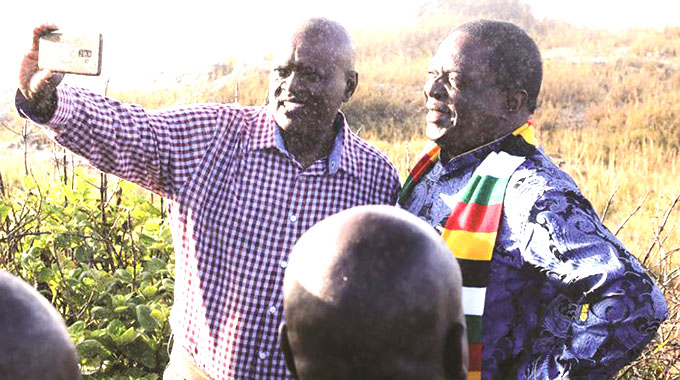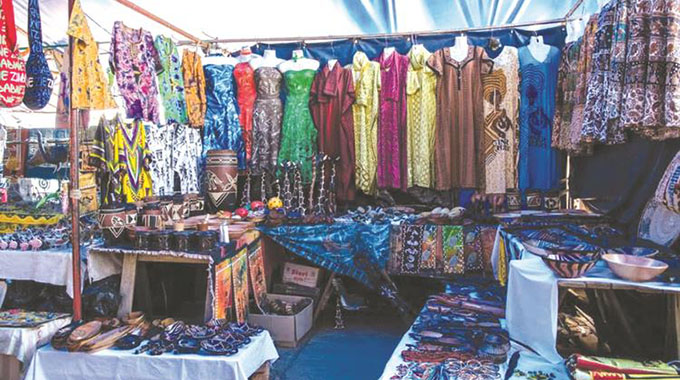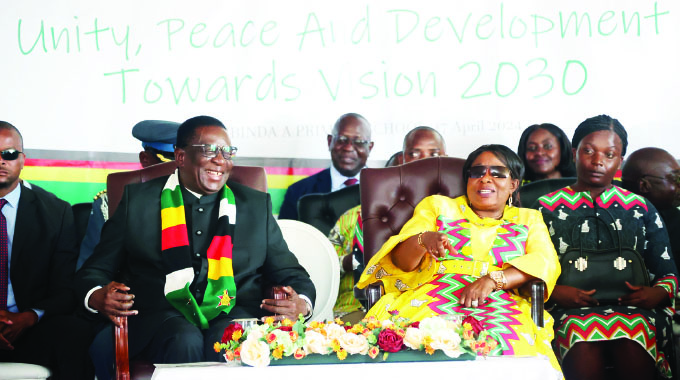Zim sitting on US$600m ivory stockpile: ED

Elita Chikwati in Victoria Falls
Zimbabwe is sitting on ivory and rhino horn stockpiles worth US$600 million which could be used to support the conservation of wildlife and natural resources for the next 20 years, President Mnangagwa has said.
He said the “one-size-fits-all” ban on ivory and rhino horn trade, enforced by the Convention on International Trade in Endangered Species (CITES), was stifling conservation efforts.
The President made the revelations while officially opening the inaugural African Union and United Nations Wildlife Economy Summit here.
Presidents Mokgweetsi Masisi (Botswana), Edgar Lungu (Zambia) and Hage Geingob (Namibia) attended the event.
Wildlife ministers from different countries, members of the diplomatic corps, traditional leaders, senior Government officials and experts also attended the summit.
The summit is being held under the theme “Communities for Conservation, Harnessing Conservation Tourism and Supporting Governments”.
President Mnangagwa called for free trade in hunting products as these have a positive impact on the national and local economies of African countries.
“Safari hunting is a vital cog in successful wildlife economies. Proceeds obtained from hunting are reinvested towards provision of water, fencing and enforcement among other conservation initiatives,” he said.
The President reaffirmed Zimbabwe’s commitment to play its part in addressing the challenge of poaching.
He said while Zimbabwe subscribed to the founding principles of CITES, it was concerned with the banning of trade.
“We are gravely concerned by one-size-fits-all approach where banning of trade is creeping into the CITES decision-making processes. We call upon the institution to resist the temptation of being a ‘policing institution’ and instead be developmental one which promotes the intricate balance between conservation and sustainable utilisation of all wildlife resources.
“Currently, Zimbabwe has about US$600 million worth of ivory and rhino horns stocks, most of which is from natural attrition of those animals.
“If we are allowed to dispose of the same under agreed to parameters, the revenue derived therefrom would suffice to finance our operational conservation efforts for the next 20 years,” he said.
He called for the fair and equitable sharing of proceeds from natural resources among communities living within wildlife areas.
“Thriving wildlife resources have a tremendous potential to be instrumental in sustainable socio-economic development through associated wildlife-oriented businesses such as eco-tourism, hunting and photographic safaris, among other benefits.
“We must, therefore, continue to utilise platforms such as this one, to explore innovative ways to leverage wildlife resources to grow our economies; eradicate poverty; achieve broad-based empowerment, create decent jobs, especially for women and youth. It is equally important to guarantee biodiversity within our ecosystems, “ he said.
President Mnangagwa said Southern Africa had 50 percent of the continent’s elephant species which was testimony of
the region’s success in conservation.
He said Government had instituted a raft of measures to curb poaching which included the implementation of the SADC Protocol on Wildlife Conservation and Law Enforcement; Park and Species Management Plans and Policies as well as combating the use of poisons and encouraging aerial surveillance support and application of new technologies, among others.
“We are also strengthening law enforcement to combat internal and cross-border wildlife crime.
“As a stakeholder, we stand ready to increase our participation in other regional, continental and global conservation campaign,” he said.
President Mnangagwa said Zimbabwe was making efforts to rejuvenate its tourism sector to meaningfully contribute to the Communal Areas Management Programme for Indigenous Resources which is a testimony of the need for more robust community-based natural resources management strategies.
“My Government is promoting an integrated concept of conservancies which involves strong private sector participation. Conservancies have also become important partners in developing tourism activities and products in non-traditional tourism areas, thereby enhancing broad based empowerment,” he said.
Zimbabwe now has conservancies in the Save Valley, Bubye Valley and the Malilangwe Wildlife Reserve that have resulted in the increase of annual population growth.
Environment, Tourism and Hospitality Industry Minister Prisca Mupfumira said the summit was important as it united all stakeholders and diverse players in the wildlife industry.
“These range from political leadership, communities and the private sector, who all need to join hands to come up with ideas and solutions designed to bring about sustainable socio economic benefits for our people,” she said.







Comments